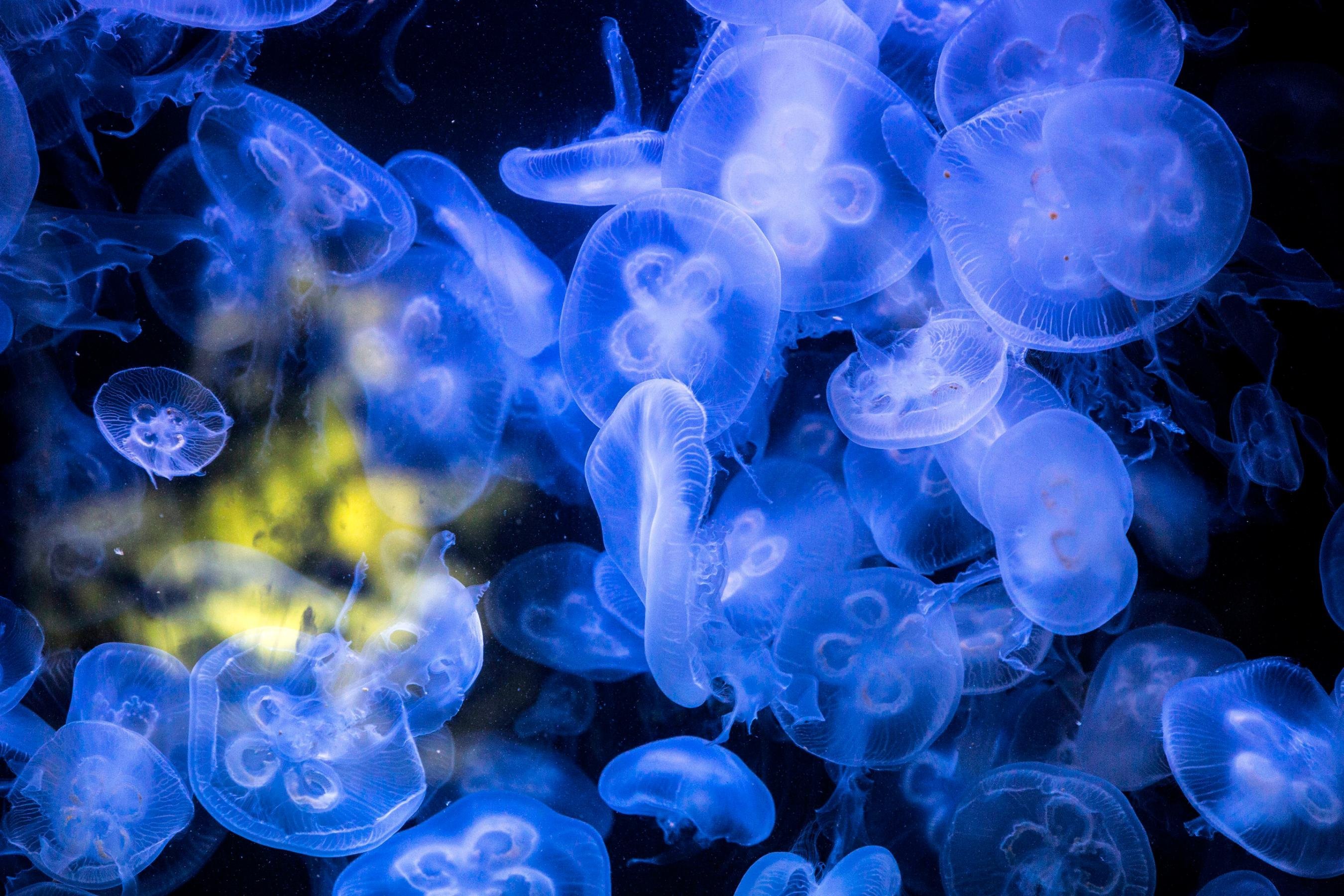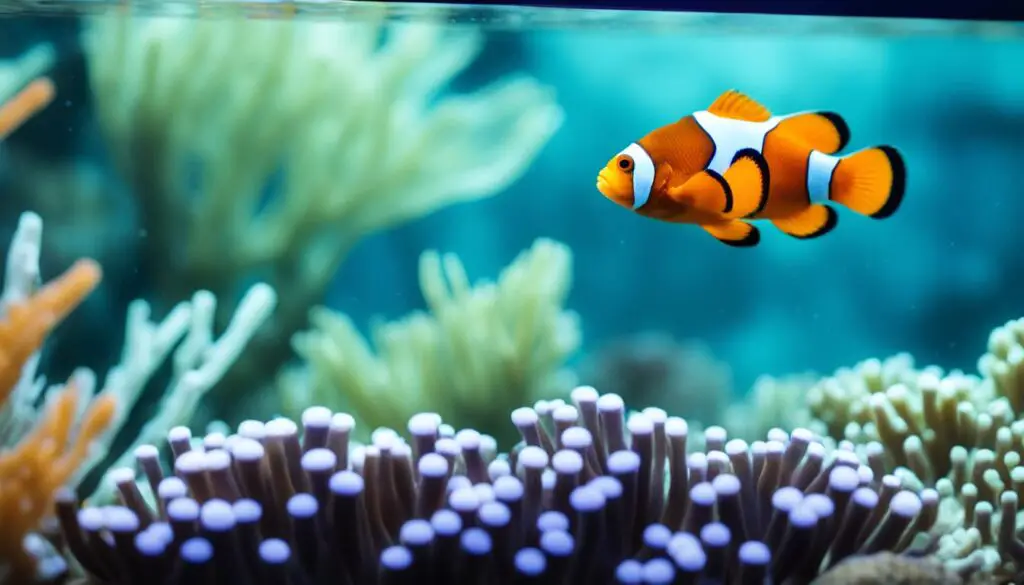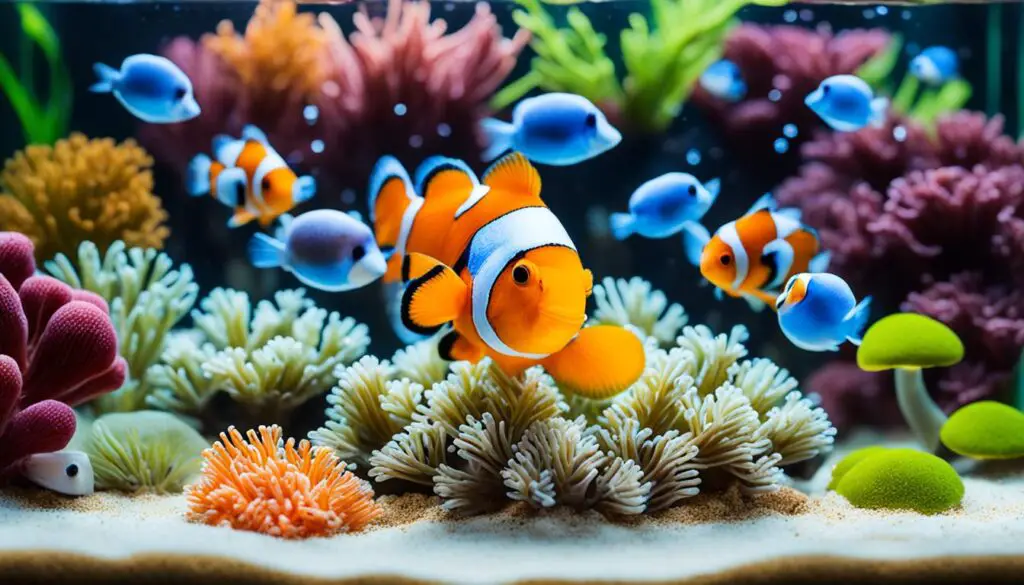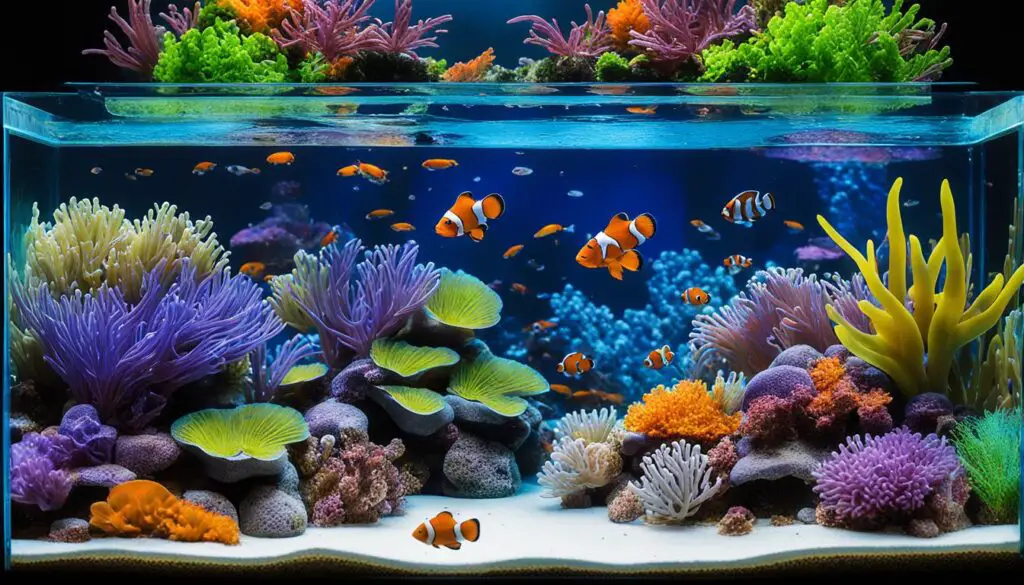What Do Moon Jellyfish Eat

Introduction
What Do Moon Jellyfish Eat: Moon jellyfish, scientifically known as Aurelia aurita, possess a captivating and elegant appearance, characterized by their translucent, saucer-shaped bells and delicate, flowing tentacles. Their ethereal beauty is matched by their intriguing feeding habits and dietary preferences. Moon jellyfish, like many other jellyfish species, are predominantly planktivorous, meaning their primary diet consists of planktonic organisms found in the marine environment. Plankton, comprising microscopic plants (phytoplankton) and animals (zooplankton), forms the cornerstone of their nourishment.
Moon jellyfish feed by drifting passively through the water column, allowing ocean currents to carry their food sources into their path. Their feeding apparatus includes specialized stinging cells called cnidocytes, housed on their trailing tentacles. These cnidocytes release stingers, known as nematocysts, when triggered by physical contact with prey, aiding in prey capture and immobilization.
In this exploration of the moon jellyfish’s dietary habits, we delve into the types of planktonic organisms that constitute their diet. From small fish eggs and larvae to various forms of zooplankton, the moon jellyfish employs a unique feeding strategy to extract vital nutrients essential for their survival and growth. Understanding their feeding behavior not only illuminates the intricate web of marine life but also sheds light on the role these gentle drifters play in maintaining the delicate balance of marine ecosystems.

What do moon jellyfish eat?
Moon jellyfish primarily feed on plankton. Their diet primarily consists of small planktonic organisms, including small fish larvae, zooplankton, and microscopic organisms like copepods and larval crabs.
Moon jellyfish, scientifically known as Aurelia aurita, primarily feed on planktonic organisms. Their diet mainly consists of small aquatic creatures like zooplankton, including tiny crustaceans, mollusk larvae, and various small types of fish eggs. These translucent jellyfish possess a simple digestive system, lacking a specialized mouth or a true stomach.
To capture their prey, moon jellyfish utilize specialized stinging cells called cnidocytes, which are located on their tentacles. When a jellyfish comes into contact with its prey, the stinging cells release stingers or nematocysts, injecting venom and immobilizing the prey. The tentacles then guide the prey to the oral arms and eventually to the mouth, where it is ingested and the digestion process begins.
Their feeding process is not overly aggressive or active; instead, moon jellyfish often rely on the ocean currents to carry planktonic organisms into their tentacles. These gentle drifters use their pulsating movements to propel water through their bells, assisting in capturing prey. Despite their relatively simple feeding habits, moon jellyfish play a vital role in marine ecosystems by controlling plankton populations and serving as a food source for various marine creatures.
What kills moon jellyfish?
Predators. As moon jellies are 98% water, they do not constitute a very tempting source of food and therefore have few predators. However, sea turtles, tuna and moonfish are known to eat them.
Moon jellyfish, like many other species of jellyfish, have natural predators and face various threats that can lead to their demise. One of the primary factors influencing their mortality is predation. Several marine organisms, such as larger jellyfish species, sea anemones, certain fish species, and sea slugs, feed on moon jellyfish. They use different strategies to capture and consume these gelatinous creatures.
Additionally, pollution poses a significant threat to moon jellyfish. Chemical pollutants, plastics, and other debris in the ocean can contaminate their habitat and disrupt their delicate ecosystem. Pollution can alter water chemistry, impacting the availability of food and the overall health of the moon jellyfish.
Changes in ocean temperature and acidity, often attributed to climate change, can also adversely affect moon jellyfish. These creatures are sensitive to shifts in their environment, and extreme variations can disrupt their life cycle, growth, and reproductive abilities.
Human activities, such as overfishing and habitat destruction, can indirectly impact moon jellyfish populations by altering the balance of the marine ecosystem. When their natural predators are removed due to overfishing or when their habitat is damaged, moon jellyfish may experience population surges, leading to blooms that can disrupt marine ecosystems and cause imbalances in the food web.
How often do moon jellyfish eat?
Generally speaking jellyfish should be fed daily, but jellies don’t need food in the same way as we do – instead they use food for growth! So, if your jellyfish is getting too big, put him on a diet – feed once every couple of days, and you’ll see him shrink in size.
Moon jellyfish have a unique feeding pattern that varies in frequency and largely depends on factors like food availability and environmental conditions. These creatures are passive feeders and primarily consume planktonic organisms, including small fish eggs, larvae, and zooplankton. Their feeding behavior is influenced by the current and movement of the water.
Moon jellyfish feed intermittently rather than on a regular schedule. When food is abundant and readily available, they may feed more frequently. In ideal conditions, they might feed multiple times a day. However, when food is scarce, they can survive for extended periods without feeding.
Their feeding mechanism involves using specialized stinging cells called cnidocytes, located on their tentacles, to capture prey. The tentacles then guide the prey to the oral arms and into the mouth, initiating the digestion process. After ingestion, the food is moved into a simple digestive cavity where enzymes break down the prey for absorption.
The frequency of moon jellyfish feeding is also influenced by their life stage and growth rate. Younger moon jellyfish, especially during their early developmental stages, tend to feed more frequently as they require more nutrients for growth and development.
Do moon jellyfish eat other jellyfish?
No, moon jellyfish do not typically prey on other jellyfish. Their diet primarily consists of planktonic organisms, as mentioned earlier.
Moon jellyfish, scientifically known as Aurelia aurita, generally do not eat other jellyfish. Their diet primarily consists of planktonic organisms, including small fish eggs, larvae, various types of zooplankton, and phytoplankton. Moon jellyfish are passive feeders and primarily rely on drifting plankton for their sustenance. They use specialized stinging cells called cnidocytes, located on their tentacles, to capture and immobilize their prey.
While moon jellyfish feed on a variety of small marine organisms, including plankton, they do not typically feed on other jellyfish. Instead, they focus on the abundant microscopic organisms that are present in their aquatic environment. Moon jellyfish lack the necessary adaptations and mechanisms to actively capture, subdue, and consume larger jellyfish.
In the marine ecosystem, there are specific species of jellyfish that do consume other jellyfish, exhibiting cannibalistic behavior. However, this behavior is not characteristic of moon jellyfish. Predatory jellyfish species have evolved specialized feeding structures and behaviors that enable them to actively hunt, capture, and consume other jellyfish.
How do moon jellyfish feed?
Moon jellyfish use their stinging cells, called cnidocytes, to capture prey. These cells contain specialized structures called nematocysts, which release toxins and paralyze prey upon contact. Once the prey is immobilized, the jellyfish’s ciliated oral arms transport the food to the central mouth for digestion.
Moon jellyfish, scientifically known as Aurelia aurita, employ a passive feeding strategy to capture and consume their food. Their feeding process involves drifting through the water column and utilizing specialized structures called cnidocytes to capture planktonic organisms.
- Cnidocytes and Tentacles: Moon jellyfish have tentacles equipped with cnidocytes, which are specialized stinging cells. These cnidocytes contain harpoon-like structures called nematocysts that help them capture prey.
- Capture of Prey: As the moon jellyfish drifts with the ocean currents, its tentacles extend outward. When planktonic organisms or small particles come into contact with the tentacles, the cnidocytes discharge the nematocysts, injecting venom or toxins into the prey to immobilize it.
- Transport to Oral Arms: The tentacles then guide the captured prey towards the moon jellyfish’s oral arms. These oral arms help transport the prey toward the central mouth region.
- Ingestion and Digestion: The prey is then transported into the moon jellyfish’s mouth, located in the center of its body. From there, the food travels into a simple digestive cavity where enzymes break down the prey into smaller particles, which are then absorbed and utilized for nutrition.
- Pulsating Movements: Moon jellyfish use pulsating movements of their bell, or the main body, to help move water through their bell and facilitate the ingestion and digestion of food.
The moon jellyfish’s feeding behavior is dependent on the availability and distribution of planktonic organisms in the surrounding water, and they adjust their feeding efforts accordingly to sustain themselves in their marine habitat.
Can moon jellyfish adjust their diet?
Moon jellyfish do not have the ability to adjust their diet based on preferences. Their diet is primarily dictated by the availability of plankton in their environment.
Moon jellyfish, scientifically known as Aurelia aurita, do not have the ability to actively adjust their diet in response to changes in food availability or type. Their diet primarily consists of planktonic organisms, including small fish eggs, larvae, zooplankton, and phytoplankton, which are passively captured as they drift through the water.
Unlike some marine creatures that can adapt their diet based on environmental conditions or prey availability, moon jellyfish lack the biological mechanisms necessary for such dietary adjustments. They possess a relatively simple and passive feeding system that relies on the movement of water currents to bring food particles into contact with their specialized stinging cells, called cnidocytes, on their tentacles.
Moon jellyfish are opportunistic feeders, consuming whatever planktonic organisms are present in their vicinity. Their feeding behavior is primarily driven by the abundance and availability of prey rather than conscious selection or modification of their diet. If their environment experiences a change in planktonic populations, moon jellyfish may experience fluctuations in their nutrient intake, but they do not actively seek out or adapt to alternative food sources.
Where do moon jellyfish find their food?
Moon jellyfish inhabit oceans, seas, and coastal areas where planktonic organisms are abundant. They float near the water’s surface, allowing them to easily encounter and capture planktonic prey.
Moon jellyfish, scientifically known as Aurelia aurita, find their food in the water column of oceans, seas, and other marine environments. They are passive feeders and primarily rely on drifting or floating planktonic organisms for their sustenance. Their feeding process involves capturing small aquatic creatures as they drift through the water, utilizing specialized stinging cells called cnidocytes located on their tentacles.
The food sources for moon jellyfish are mainly planktonic, including small fish eggs, larvae, zooplankton, and phytoplankton. These microscopic organisms are abundant in the ocean and form a significant portion of the marine food web. Moon jellyfish do not actively hunt or search for prey; instead, they let the ocean currents carry planktonic organisms into their tentacles.
As moon jellyfish drift with the currents, their tentacles extend into the water, and if planktonic organisms come into contact with these tentacles, the stinging cells (cnidocytes) release nematocysts, injecting venom to immobilize the prey. The tentacles then guide the captured prey towards the central mouth region for ingestion and digestion.
Their feeding behavior is influenced by the movement of water and the abundance of planktonic organisms, adapting to the availability of food in their immediate environment. Moon jellyfish play a vital role in regulating plankton populations and contributing to the marine ecosystem’s overall balance.
Is it cruel to keep jellyfish in a tank?
Keeping jellyfish in an aquarium is no crueler than keeping a plant in a plant pot. In the wild mortality rates are exceedingly high with only a few jellies in every thousand reaching maturity due to natural predation and beaching.
The moon jellyfish’s feeding behavior is dependent on the availability and distribution of planktonic organisms in the surrounding water, and they adjust their feeding efforts accordingly to sustain themselves in their marine habitat.
Keeping jellyfish in a tank raises ethical concerns related to animal welfare, environmental impact, and appropriate care. The debate on whether it is cruel or not largely revolves around the conditions in which the jellyfish are kept and how well their needs are met.
- Space and Environment: Jellyfish require a specific environment to thrive. Inadequate tank size or conditions can cause stress, hinder movement, and lead to physical harm. Properly replicating their natural habitat is challenging.
- Stress and Well-being: Being confined to a tank can be stressful for jellyfish. In the wild, they have expansive ocean spaces, but in tanks, they may face constraints that could affect their behavior and overall well-being.
- Diet and Nutrition: Providing a suitable diet for captive jellyfish can be difficult, potentially impacting their health. A lack of proper nutrition can lead to weakened immune systems and shorter lifespans.
- Life Expectancy and Reproduction: Jellyfish in captivity often have shorter lifespans compared to those in the wild. Reproduction, a vital aspect of their life cycle, is challenging to achieve in captivity.
- Sensory Deprivation: Being kept in tanks might deprive jellyfish of natural stimuli, affecting their sensory experiences and quality of life.

Conclusion
Moon jellyfish, with their captivating appearance and passive feeding strategy, primarily subsist on planktonic organisms found abundantly in the oceans and seas. The intricacies of their diet highlight the essential role they play in the marine food web, contributing to the delicate balance of the ecosystem. Their consumption of various forms of plankton, including small fish eggs, larvae, and zooplankton, emphasizes their adaptability and opportunistic feeding behavior.
Moon jellyfish utilize specialized stinging cells, cnidocytes, to capture prey, showcasing an intriguing mechanism for immobilizing planktonic organisms. This method allows them to effectively consume their prey as they drift with ocean currents. Understanding their feeding behavior not only provides insights into their dietary preferences but also sheds light on their ecological significance, as they help control plankton populations and serve as a crucial food source for other marine creatures.
However, it is imperative to consider the ethical implications of keeping moon jellyfish in captivity and understand the importance of providing them with suitable environments that mimic their natural habitat. Balancing the marvel of observing these elegant creatures with the responsibility to ensure their well-being is key to appreciating and preserving the beauty and contributions of moon jellyfish in our oceans.



